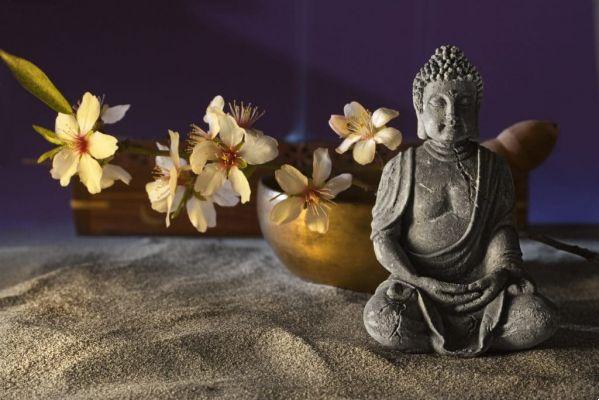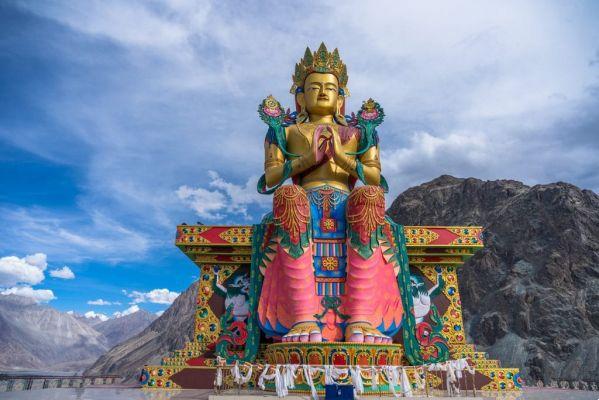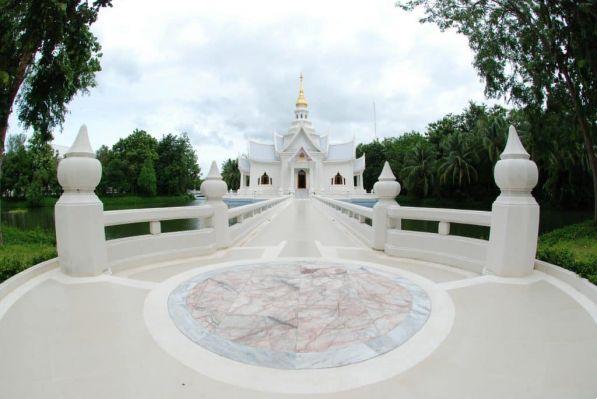Tibetan Buddhism is a branch of Buddhism characterized by a more marked mystical nature. It is also known as Vajrayana or Lamaism (this name is derived from the term “lama”, meaning “master”, as in this line there is an emphasis on the relationship between students and lamas).
The term “Tibetan Buddhism” is only recognized in the West. Orientals do not distinguish between Tibetan Buddhism and Indian Buddhism, as there is no distinction between these two currents.
In Tibetan Buddhism, meditation exercises are used in the form of improved rituals, which include reading saddhanas (liturgical texts), stimulating mental visualizations, accompanied by musical instruments. This strand is also known for its keen artistic sense, expressed through painting, sculpture and other forms of art.

Mahayana – the exercise of compassion
Tibetan Buddhism follows the thought of Mahayana (from Sanskrit, it means “The Great Vehicle” – used to carry all sentient beings into nirvana, releasing them from pain and suffering). Also known as Mahayana, it is an approach that specifically emphasizes the four immeasurable qualities (love, compassion, joy and equanimity) and the six perfections (in that exact order, as each one depends
of the previous one: generosity, ethics, patience, energy, concentration and wisdom).

Dalai Lama
Buddhism has as its greatest representative the Dalai Lama - supreme leader of the Buddhist religion, spiritual ruler of all lamas. The Dalai Lamas are important monks of the Gelug school (the newest of Tibetan Buddhism, along with the other three schools: Nyingma, Kagyu and Sakya). They were Tibet's political leaders between the 17th and 20th centuries (more precisely until 1959).
In the Mongolian language, Dalai Lama means “ocean of wisdom”. In Buddhist belief, the Dalai Lamas represent the reincarnation of Prince Chenrezig, one of the representatives of Buddhism, the holder of the white lotus (one of the eight auspicious symbols of Tibetan Buddhism), a symbol of compassion.
The 14th and current Dalai Lama is called Tenzin Gyatzo, born in Tibet and exiled in India, after China's invasion of his native country. During more than 20 years of exile, Tenzin fought for Tibetan independence, seeking peaceful solutions. Until at a given moment he himself ended up drawing up a peace plan. In 1989, he was awarded the Nobel Peace Prize for his non-violent campaign to end Chinese domination of Tibet.

Auspicious symbols of Tibetan Buddhism
There are eight auspicious symbols in Tibetan Buddhism. These symbols represent the gifts offered by the gods to Shakyamuni Buddha once he attained enlightenment.
You may also like
- What is Buddhism?
- What can you learn from Ganesha?
- Lotus Flower: The Sacred Plant and Its Meanings
Find out a little about each of them below.:
Lotus flower
The lotus is a flower that grows in the swamp, yet it is endowed with extraordinary beauty. It symbolizes the idea that purity can remain intact even in the midst of mundane turmoil. It also symbolizes renunciation, as this flower “renounces” the soil, as its roots are in the deep mud, and it grows through the murky water, shining beautifully and fragrant.
Dharma Wheel
One of the most well-known symbols of Buddhism, the wheel has eight spokes, representing the Eightfold Path. It refers to the teachings of Buddha.
Banner (or flag) of victory
Also called the banner of victory, it symbolizes the Buddha's victory over the demon Mara, Lord of Illusions and everything he represents: lust, passion, pride and the fear of death. It symbolizes, in a basic way, the release of belief from an illusion created by us and considered to be true.

Nov as Thu
It is a geometric shape made up of several nodes with no beginning or end, in an endless continuity. It represents the idea that whenever something is finished, something new is started, beginning and end are confused, because you don't know where one ends and the other begins. It also symbolizes the perennial wisdom of the Buddha. Furthermore, the node serves as a reminder that time is not linear but cyclical.
two gold fish
For Hindus, it means good luck. They represent the full happiness, fertility and abundance of those who live in the “ocean of samsara” (samsara, from Sanskrit, means “continuous flow”, encompasses all the cycles of rebirths assumed by an individual).
glass of treasures
It refers to the shape of the womb, from which all creation is born. It symbolizes long life and prosperity.

Sunshade
It represents protection against suffering, which is a great weakening of beings.
white shell
Its spiral is clockwise. It represents the sound of dharma awakening beings from ignorance. The melodious sound crosses enormous distances, and is a call to the practice of good for all beings.
There is still much to be discovered about Tibetan Buddhism, as its meaning is vast, its teachings are constant and have diverse applications for life. Now that you know a little bit about this aspect, try to find in the lessons a purpose for your life, in order to provide happiness and evolution. Namaste!

























